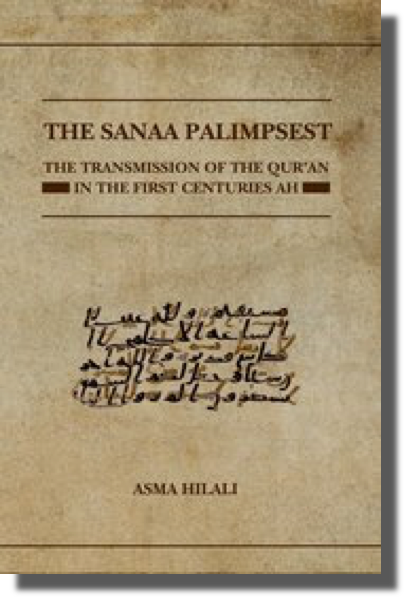
In the latest installment of the Review of Qur’anic Research (Vol. 5, no.9), Eléonore Cellard (Collège de France) reviews Asma Hilali’s The Sanaa Palimpsest: The Transmission of the Qurʾan in the First Centuries AH (Oxford: Oxford University Press, 2017).
 In her review, Cellard writes “‘The Sanaa Palimpsest: The Transmission of the Qurʾan in the First Centuries AH’ by Asma Hilali aims to contribute to the ongoing discussion of the transmission of the Qurʾān in the early Islamic centuries, presenting a new interpretation of one of the most discussed documentary witnesses in recent years: the palimpsest of Ṣanʿāʾ. This monograph is the culmination of a long investigation, that started with the digitization project De l’Antiquité tardive à l’Islam (2005–2008) funded by the French ANR (Agence Nationale de la Recherche). One of the aims of this project, directed by Christian J. Robin, was the digitization of three Qurʾān manuscripts found in the Ṣanʿāʾ mosque in 1972 or 1973 and kept in one of the mosque’s libraries, Dār al-Makhṭūṭāt. Of the three digitized manuscripts, one—inventoried as DAM 01-27.1—is of particular interest because it is a palimpsest, parchment leaves from which a previous text has been erased in order to write a new text above. The most intriguing feature is that its lower and upper texts are both qurʾānic. Then, what are the motivations behind this recycling operation?…”
In her review, Cellard writes “‘The Sanaa Palimpsest: The Transmission of the Qurʾan in the First Centuries AH’ by Asma Hilali aims to contribute to the ongoing discussion of the transmission of the Qurʾān in the early Islamic centuries, presenting a new interpretation of one of the most discussed documentary witnesses in recent years: the palimpsest of Ṣanʿāʾ. This monograph is the culmination of a long investigation, that started with the digitization project De l’Antiquité tardive à l’Islam (2005–2008) funded by the French ANR (Agence Nationale de la Recherche). One of the aims of this project, directed by Christian J. Robin, was the digitization of three Qurʾān manuscripts found in the Ṣanʿāʾ mosque in 1972 or 1973 and kept in one of the mosque’s libraries, Dār al-Makhṭūṭāt. Of the three digitized manuscripts, one—inventoried as DAM 01-27.1—is of particular interest because it is a palimpsest, parchment leaves from which a previous text has been erased in order to write a new text above. The most intriguing feature is that its lower and upper texts are both qurʾānic. Then, what are the motivations behind this recycling operation?…”
Want to read more? For full access to the Review of Qur’anic Research (RQR), members can log in HERE. Not an IQSA member? Join today to enjoy RQR and additional member benefits!
© International Qur’anic Studies Association, 2019. All rights reserved.
